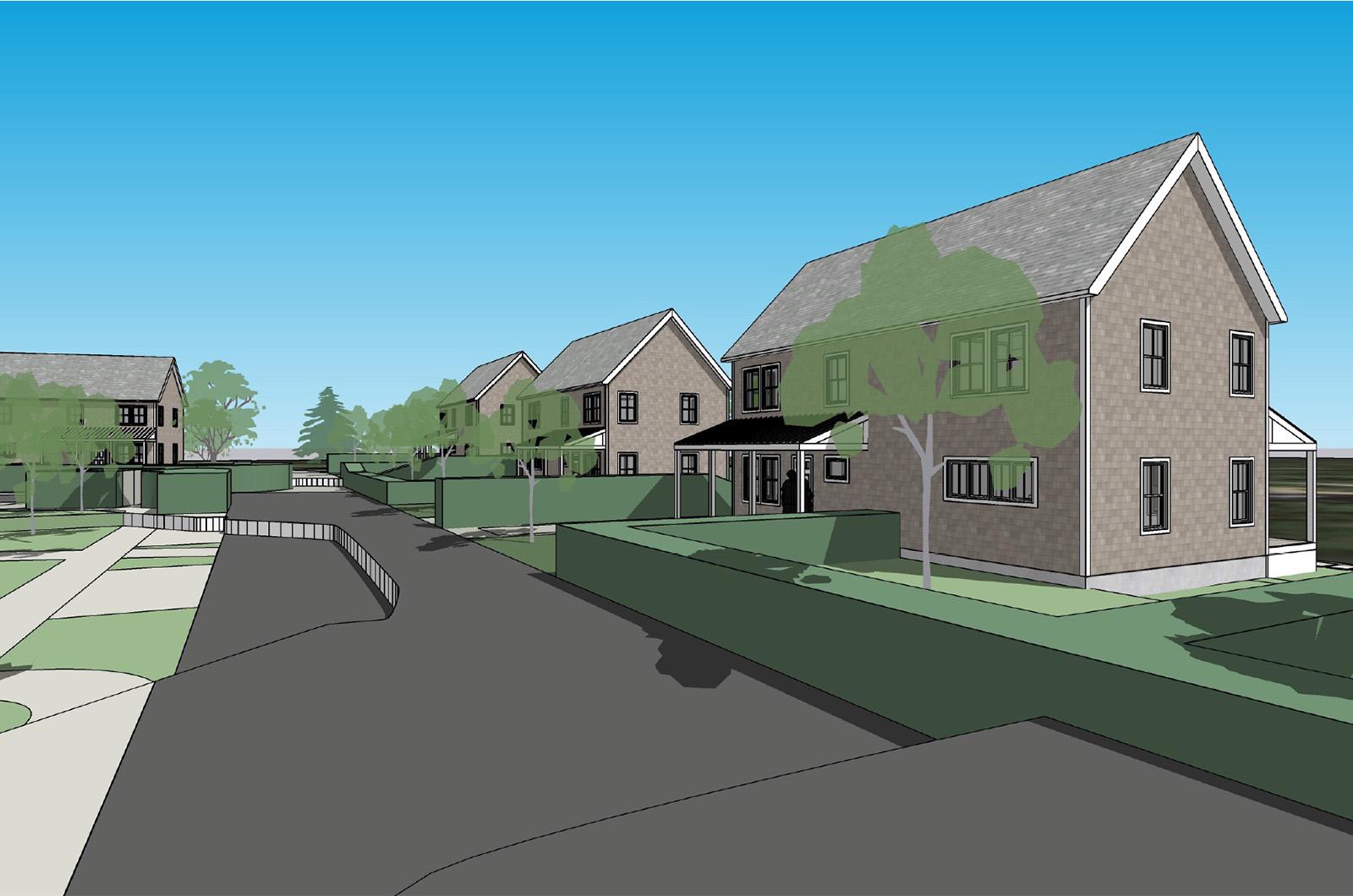A new neighborhood of 100 apartments for low to moderate income Islanders, served by four stores with employee housing, has been proposed for eight acres on Edgartown-Vineyard Haven Road in Oak Bluffs, just east of the future Southern Tier affordable housing complex.
Green Villa is the second of two workforce housing developments recently planned for down-Island by land owner William Cumming’s Atwood Company, in partnership with Miller Professional Construction and Edgartown real estate broker Michele Casavant. The team’s other potential project is Edgartown Gardens, a proposed 64-apartment rental complex on Upper Main street that would reserve 80 per cent of its units for people older than 55 and 25 per cent for low-income residents.
Both projects are in the early planning stages and would need to go through town application processes and the Martha’s Vineyard Commission.
Developers presented the Green Villa plan, which aims to offer local teachers affordable housing opportunities, at the All-Island School Committee meeting last week.
The apartments at Green Villa — 84 one-bedroom units and 16 with two bedrooms — will be for sale, with permanent deed restrictions limiting ownership to year-round residents with low to moderate incomes.
“The philosophy is if you want to attract and retain good teachers and good employees on Island, people want to have home ownership. They don’t want to be transient and just renting,” Ms. Casavant said at the Nov. 2 meeting of the all-Island school committee.
Seventy per cent of the development will be earmarked for Oak Bluffs residents, town employees and workers who serve the town — including teachers at both Oak Bluffs School and Martha’s Vineyard Regional High School, Mr. Cumming told the school committee.
“We want to make sure they have a chance to get on the property ladder,” Mr. Cumming said, urging the committee to support his plan.
“We know how many [school staffers] commute off Island every day... and have to come back every day. This is potential housing for them, and we hope that you embrace this,” he said.
Deed restrictions would prohibit individual owners from renting out their units, he said, although he is working on a potential exception for teachers on year-long sabbatical leaves.
As at Edgartown Gardens, 25 per cent of Green Villa apartments will go to owners earning no more than 80 per cent of the area median income, according to the plan Mr. Cumming presented to the school committee.
The other 75 per cent will be for owners making up to 150 per cent of the area median.
Estimated prices, based on 2023 median income statistics and an 8 per cent federal 30-year fixed mortgage rate, would today be $218,129 for a Green Villa one-bedroom (680 square feet) and $241,012 for a two-bedroom (1,038 square feet) for buyers making 80 per cent or less of the area median income.
At 150 per cent of area median income, prices would today be $617,625 for a one-bedroom and $689,728 for a two-bedroom, according to the presentation.
Mr. Cumming said that up to half of the higher-priced apartments will be sold to businesses for worker housing, but the deed restrictions will limit how much rent employees can be charged.
“We think we can sell them all to businesses today. We’re not going to do that,” he said. “We want to preserve 50 per cent of these units for people, individuals, families in the community, so that they can get on the property ladder and actually own it directly.”
If the school district should wish to buy any units for staff housing, Mr. Cumming said, those would come from the allotment for business buyers.
When Green Villa owners sell their units, the buyers will have to be in the same income bracket, Mr. Cumming said.
“There will be a monitoring agent assigned by the state [and] this will be tested annually,” he said.
While the state will play a role in enforcing the deed restriction, Green Villa itself is a privately-funded project, Ms. Casavant told the school committee.
“This development is proceeding without any monetary subsidies or inducements — no CPA [Community Preservation Act) money, no tax credit money, no monetary subsidies whatsoever,” she said.
The four proposed stores, with employee apartments upstairs, will be located at the front of the development for the convenience of all the area’s current and future residents, Mr. Cumming said.
“We want a food store, something like a Tony’s Market, because it’s a food desert, as it’s been described, and you have to go 15 minutes in any direction to get food,” he said.
“Ultimately we want something so people don’t have to get in the car to go get a gallon of milk or half a gallon of milk or butter and eggs,” Mr. Cumming said.
The other three stores also should serve the area’s neighborhoods, he said.
“We’re not just looking to add retail... so it would be, maybe, a pharmacy so you don’t have to go into the triangle or the town and add more traffic,” he said.
The project will begin seeking permits this month, Ms. Casavant said, with the goal of beginning construction in December of 2024.
All-Island school committee chair Amy Houghton thanked the developers for their presentation.
“It’s a nice opportunity for many people,” she said.








Comments (20)
Comments
Comment policy »